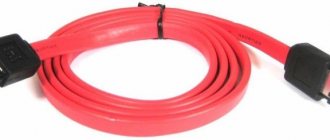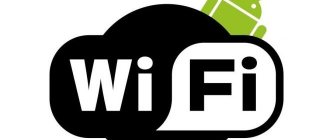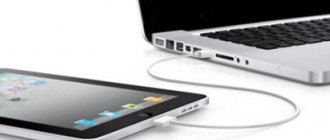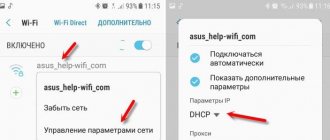Finding yourself “in your hands” with an iPhone that does not catch the network on any trip or business trip is not a pleasant situation. The boss will be annoyed that his employee is unavailable and did not submit a timely report, relatives will be worried, potential clients will be off the hook. It will be impossible to even call help or a taxi if something happens to the car. It should be recognized that modern man is heavily dependent on the GSM signal.
Fortunately, in most situations you can solve the problem of a weak network on your iPhone yourself and quite quickly. In this article we will talk about common reasons why an Apple gadget has poor network reception and ways to correct the situation.
The time is set incorrectly
The first thing you need to check on an iPhone that does not receive a GSM signal is the date / time settings. If the settings are incorrect, you should set the correct ones manually . This is done like this:
Step 1 . Follow the path “Settings” - “General” - “Date and time”.
Step 2 . Find out the exact time in your time zone. To do this, you can use, for example, the Yandex. Time".
Step 3 . While spinning the reels, set the correct date, hour and minute.
Step 4 . Restart your iPhone and check the network.
If you have access to Wi-Fi, you can avoid manually setting the time. In the “Date and Time” subsection there is an “Automatic” slider. After activating it, the iPhone independently determines the time in the set time zone - but only if the gadget is connected to the Internet.
Your humble servant prefers not to use automatic time adjustment, because his iPhone “counts” an hour too late.
Why is my iPhone not connecting?
There is no one-size-fits-all solution to this problem, so I'll walk you step-by-step through several troubleshooting paths that I found most effective during my time at Apple.
1. Register an account with the operator
Operators cancel customer accounts for various reasons. I've heard of cases where iPhones were turned off because the operator suspected fraudulent activity by the person or the customer's payment was late.
If any of these issues sound familiar to you, call your carrier to make sure everything is okay. There's no way your iPhone will tell you if your account has been deleted, but it's a fairly common problem for your phone to not connect.
If you find that your service issue is not caused by your carrier, check out my article on cell phone savings to see how you can save hundreds of dollars a year. If you haven't found the cause of your problem yet, then it's time to analyze your phone's software.
2. Update iPhone software and carrier settings
Many iPhone owners reported that the phone lost connection after the release of iOS 8. Although this problem has long been resolved, because iOS updates have always contained many fixes for less common software errors. You can update your iOS version in two ways:
1. If you can connect to Wi-Fi, check if a software update is available for your iPhone by going to Settings -> General -> Software Update. If the update is not available, go to Settings -> General -> About to check for an update. If you don't have a button to check for these updates, just stay on the About page for 10 seconds and if nothing appears, there are no new updates yet.
2. If you don't have access to Wi-Fi, connect your iPhone to your computer and use iTunes to check if a software update is available for your iPhone. If an update is available, iTunes will automatically ask if you want to update your iPhone. iTunes also automatically checks for carrier settings updates, so you can always update your phone that way.
If your phone's connectivity doesn't work after a software update, or if your software has already been updated, scroll on and do other troubleshooting to resolve your issue.
3. Reset network settings
Resetting your iPhone's network settings to factory settings can fix all kinds of cellular and Wi-Fi related problems on your iPhone. However, this method will automatically disconnect you from all your Wi-Fi networks, so you'll have to connect to them and re-enter your Wi-Fi passwords.
To reset your network settings, go to Settings -> General -> Reset -> Reset Network Settings. Enter your passcode on your iPhone, then tap Reset Network Settings when the confirmation pop-up appears at the bottom of the screen.
4. Check your iPhone's cellular settings
There are several cellular data settings on your iPhone, and if something is not configured correctly, your iPhone may say “no service.” Settings can be changed accidentally, and sometimes the problem can be solved simply by turning a setting on and off.
1. Go to Settings -> Cellular and make sure that cellular is turned on. If so, try turning it off and on again.
2. Go to Cellular Settings -> Roaming and make sure Voice Roaming is enabled. Voice roaming should be enabled for most people in the United States. Operators do not charge for cellular roaming as before. If you're interested, one of our authors wrote an article that explains how Voice and Data Roaming works on your iPhone. Warning: Turn off Voice Roaming when you travel to another country to avoid a negative balance when you return home.
3. Go to Settings -> Telecom operator and disable automatic operator selection. The iPhone may stop working if you manually select a cellular network to connect to. Many readers may not see this option on their iPhones, and that's completely normal. This only applies to certain operators.
5. Remove the SIM card
The SIM card connects your iPhone to your carrier's cellular network. This is how your carrier differentiates your iPhone from all others. Sometimes the iPhone will refuse service by simply removing the SIM card from the iPhone and inserting it back.
If you don't know how to remove the SIM card, read steps 1-3 of my article on why iPhone sometimes shows "no SIM card" error. To remove the SIM card, you can choose a SIM eject tool or simply use a paper clip.
If your phone still has no connection after reading my other article, come back here and continue to the next step.
6. Check your phone for water damage
It's easy to understand why an iPhone might show a "No Connection" error if it's broken, but water damage can be invisible and insidious. If your iPhone starts showing a "No Connection" error after it gets wet, there's a good chance that water damage is causing the problem.
Apple doesn't repair water damaged iPhones - they replace them. If you have AppleCare+, the cost of replacing a damaged iPhone is negligible compared to what the phone itself is worth. If you're looking for a less expensive alternative, visit the repair options section below.
7. Backup and restore iPhone, but read the warning first!
Software corruption can cause everything from your iPhone's battery draining too much and getting too hot, to problems like this one. Make sure you back up your iPhone to iTunes or iCloud because restoring your iPhone will erase everything on it.
Problems with mobile operator settings
If the time is set correctly, but the iPhone still does not receive the network, you can suspect that the settings of the cellular operator have gone wrong. A set of such measures will help solve this problem (each subsequent step should be performed only if the previous one did not produce results):
Step 1 . Turn airplane mode on and off. The corresponding slider is located at the very beginning of the Settings menu.
Step 2 . In “Settings”, go to the “Operator” section and deactivate the “Automatic” toggle switch.
Step 3 . Check if the cellular data settings (APN, username, password) are entered correctly. Follow the path “Settings” - “Cellular Communications” - “Cellular Data Network”. The “Cellular Data” block contains the necessary details.
You will find the correct settings for the 3 leading operators in our article on how to set up the Internet on an iPhone. If there is a discrepancy, change the cellular data settings on your Apple gadget manually. After changing the settings, be sure to restart your device.
Incorrect date and time settings
Failures of important programs and applications also cause network problems. In particular, the iPhone loses the network if the time and date are set incorrectly. The sensors get lost when the phone is not used for a long time or when it falls. In this case, the algorithm of actions will be as follows:
- connect to any wireless network
- open basic cell phone settings
- select "Date and time"
- opposite the “Automatic” menu item, move the slider to the on position
- restart your iPhone
Usually, after this simple procedure, problems with the network disappear - then the device works correctly and receives calls normally. If this does not help, then you can try a hard reboot of the gadget. To do this, follow several steps:
- Press and hold the Power and Home buttons for 10 seconds
- wait until the Apple logo appears on the display
- turn on your iPhone as usual and wait until it connects to your mobile operator's network
If your iPhone doesn't work in the cold
Sometimes Apple smartphones lose network in the cold. Many iPhone users encounter this problem, but it is not always possible to solve it. To reduce the negative impact, it is recommended to disable 3G. In this case, the connection will be lost less often. If reception still does not resume after you get home and warm up your iPhone, try one of the following:
- restart your iPhone
- check the settings from your mobile operator
- turn airplane mode on and off
- In the cell phone settings, set the network selection mode to automatic
If a solution to the problem has not been found, then it is better to contact specialists. Most likely, frost simply caused a breakdown, and the root cause lies in mechanical damage (even after a fall from a small height, malfunctions of the antenna or radio module may occur).
Weak GSM signal
If the reason for the weak signal is that the user’s location is not within the GSM coverage area, you cannot fix the problem yourself. You will have to buy a SIM card for temporary use. Although in fact, the territory where there absolutely no GSM signal still needs to be looked for.
There are areas where the signal is very poor in large cities. As a rule, iPhones are not detected in the subway, basements, or elevators. The network may disappear inside the building due to the fact that the concrete walls of the room jam the GSM signal. Some buildings deliberately use “jammer” devices to prevent employees from excessive Internet surfing. The jammers look something like this:
Previously, “jammers” were readily placed in educational institutions. Now the use of such devices has been reduced to a minimum - the modern educational process requires the student to actively access the mobile Internet.
If the GSM signal is weakened in the user's home , this is a reason to file a claim with the communication provider. The iPhone owner needs to call the hotline number and complain about the lack of network. The application will be transferred to the technical department, whose employees will make every effort to resolve the problem.
Hardware problems
Sometimes there is no network on the iPhone due to damage to the hardware: antenna, motherboard and other important components of the device. In this case, the user will have to contact gadget repair centers.
Antenna problems
More often than others, when damaged or damp, the antenna responsible for receiving the cellular signal suffers. As a result of mechanical stress, it oxidizes and fails.
Antenna replacement
Service center employees will help you replace the antenna if it is damaged, oxidized, or has a manufacturing defect.
No connection in the cold
It happens that in severe frost the iPhone does not ring. To maintain the functionality of the gadget at subzero temperatures, it is recommended to disable 3G and GPS, which interfere with the connection.
Motherboard
The iPhone does not connect to the network if the modem area on the motherboard is damaged, and the modem firmware will disappear in the settings. How to check the modem status:
- Go to “Settings”.
- Select the “Basic” category.
- In the “About device” item, find the “Modem firmware” item.
The absence of information in the firmware field indicates a malfunction of the modem and the need to contact service.
Addresses of service centers in Moscow:
- Apple services: st. Zemlyanoy Val, 65, Moscow, Russia, +7 (495) 229-12-91, apple-services.ru.
- Apple Service Center: st. Zolotorozhsky Val, 38, Moscow, Russia, apple-service-center.com.
- IPhone-Doctor.ru: Paveletskaya Square, 1, Moscow, Russia, Paveletskaya,, iphone-doctor.ru.
- Brobrolab: Derbenevskaya st., 1, Moscow, Russia, Paveletskaya, +7 (499) 110-17-85, brobrolab.ru.
- Service center: Nikolskaya st., 4/5, Moscow, Russia, Revolution Square, planetiphone.ru/service.
SIM card is damaged
Mechanical damage to the SIM card or improper cutting cannot be the reason why there is no network on the iPhone. If the card is faulty, the SIM gadget will not recognize it at all. This is a completely different problem, the possible solutions for which we proposed in the article “Why the iPhone does not see the SIM card.”
However, a user suffering from a lack of network on a smartphone should still conduct a visual inspection of the SIM card. If there is dirt on the contacts, you need to carefully remove it. Even the fact that the user removed the SIM card and installed it back in the slot can help restore a normal GSM signal.
If the owner of an iPhone has suspicions that the gadget has poor network reception due to the SIM card, he should contact the service office with a passport and have the SIM replaced. This procedure is free and only takes a couple of minutes.
Solve the problem yourself
In cases of minor malfunctions, you can do it yourself. This includes random activation of emergency modes, mild software glitches and similar defects.
The following describes popular breakdowns that you can fix yourself.
Check airplane mode
A complete shutdown of the network and deactivation of all types of communication can be performed when turning on airplane mode. You can activate this feature on your iPhone by accident. Disabling is done like this:
- go to the desktop;
- go to settings;
- here find the airplane mode line and move the slider to the off position.
Also, when the user makes changes to the iPhone software, a failure may occur, which will affect the performance of the entire system. Turning on airplane mode for 30-40 seconds and turning it off again can clear errors and return the equipment to operation.
Check time and date
The next problem may also be the reason that the iPhone does not see the network and is due to a technical glitch in the date and time determination program. Usually this happens after an unsuccessful firmware update or a glitch. Also, the user can harm the iPhone accidentally due to a lack of understanding of his actions.
To resolve the malfunction, you must perform a certain sequence of actions.
- Exit to desktop.
- Find the settings tab and go to it.
- In the menu that opens, go to the “basic” item, where select the “date and time” section.
- Here, switch the automatic setup button to enabled mode.
After completing all the procedures, you will need to restart your iPhone for the changes to take effect.
Check coverage area
The next common reason why the iPhone does not see the network may be a simple loss of connection. This usually happens when the user travels out of town or into a forest belt area. Here, mobile operators install communication towers extremely rarely due to their lack of demand.
You can correct the situation by returning back to the coverage area of the transmitter antenna or distributing Wi-Fi from a phone that has a network.
Check SIM card
The next common reason why an iPhone does not connect to the network is the incorrect operation of the SIM card module. Usually the causes of breakdown are factors.
- Incorrect cropping of the SIM card. The iPhone manufacturer recommends that you contact specialized workshops to cut SIM cards. If you perform the procedure yourself, there is a high risk of cutting off the plastic in the wrong place where it is necessary. The result will be an incorrect response of the smartphone or failure to make the necessary contacts.
- Worn card contact tracks. If an element is often rearranged into different devices, there is a risk of wear of the contact group of the part. When the tracks wear out, the iPhone will not be able to close the contacts correctly, which will cause the device to become unresponsive.
- Oxidation of card contacts. The external slot of the iPhone does not seal the connector hermetically. If water or steam gets inside, there is a high probability of oxidation of the copper contacts, which leads to loss of connection between the gadget and the device.
- Mechanical damage. Random scratches or cracks in the coating of the element appear during careless installation or the application of force.
Remove and return the SIM card
Also, if the connection on the iPhone is lost, it is recommended to rearrange the SIM card. This is required due to the fact that the device may freeze or “fail,” which will cause a loss of connection. To do this you need to follow simple steps:
- use a special key to press the tray key;
- remove the SIM card from the iPhone and wait 30-40 seconds;
- insert the element back into the socket if there is no visible damage to it.
iOS crash
The failure of the above measures tells the user that the problem may lie in the software. For the gadget to work correctly, the latest system updates are required. To check if there are available updates, the user needs to follow the path “Settings” - “General” - “Software Update”.
If, as a result of the check, the iPhone finds newer software than is installed on the device, the user should download it. If there is nowhere to update further, you need to turn to the procedure for flashing the gadget. This procedure is simple and does not require contacting a service center - any user can perform it himself. To help a beginner, our article about flashing an iPhone.
No internet on iPhone
After updating to iOS 13.3, some users lost the ability to use cellular data
Many users have encountered problems with cellular networks on their iPhones after updating to iOS 13.3. According to them, the problem arose precisely as a result of installing the current version of the operating system. This led to the fact that cellular data was turned off in principle and did not allow either calling or writing SMS messages, not to mention using the Internet on a smartphone. Because of this, some users were actually left without communication with the outside world, being forced to look for public access points.
The gadget has broken down
If there is a physical breakdown of the iPhone, a visit to the specialists cannot be avoided. As a rule, a gadget’s failure to catch the network is caused by a malfunction of the antenna module. A broken antenna is the result of a fall or flooding of the gadget. The cost of repair in this case will depend on the iPhone model. We will collect the approximate prices in a table:
| iPhone 7 | iPhone 6S | iPhone 6 | iPhone 5S | iPhone 4S | iPhone 4 | |
| Repair price | RUB 3,300 | 2,000 rub. | 1,500 rub. | 1,000 rub. | 700 rub. | 700 rub. |
You should only contact Apple authorized service centers for repairs. Repairing an iPhone in the “basement” will void the warranty.
iPhone does not connect to the network after unlocking: what to do?
Network problems may appear after the user has unlocked the Sim-Lock device using one of the following programs: redsnOw, ultrasnOw, SAM Tool, SAMPrefs. The following measures will help resolve the problem:
Step 1 . Reset your network settings. To do this, you need to follow the path “Settings” - “General” - “Reset”, click on “Reset network settings” and enter the password.
This measure will not lead to the deletion of personal data.
Step 2 . Restore your iPhone via iTunes and set it up like new. The likelihood that this measure will help is 90%. Remember that restoring clears the device's memory. Before you begin the recovery procedure, make a backup copy of your data.
If the gadget is locked to AT&T, it will not work with Russian SIM cards, no matter what efforts the user makes. The unfortunate owner of such a smartphone is better off seeking an official unlock.
Problems with the software
Software errors are corrected by developers as they are identified and taken into account in future versions of the OS. Therefore, updating the system to the latest version is recommended first.
Restart iPhone
To restart your iOS device, simply turn it off and on. As a result, the network settings will be reset, which will help the iPhone find an access point.
Reset network settings
The operation helps in many cases when the phone reports no network. This requires:
- Go to “Settings”.
- Find the "General" category.
- Click "Reset".
- Select the “Reset network settings” option.
Set to factory settings
Installing factory settings will help troubleshoot system problems and get rid of dangerous content. However, all games, movies, music and other applications on the phone will have to be reinstalled.
Firmware update
Updating firmware has a beneficial effect on the operation of an Apple device. The user can easily cope with this task using iTunes. After the iPhone connects to the PC, the “Browse” tab in iTunes displays the basic characteristics of the device: model, phone number, firmware version, and others. You should select the “Update” option.











